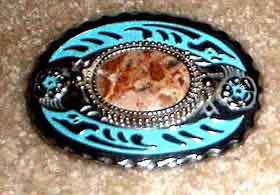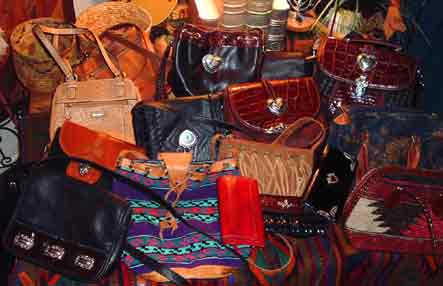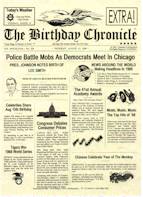|

LEANDER HISTORY WEBPAGE

Leander Area Bulletin Board

Received the following email from
Bruce Giddens who grew up in the Leander area.
Hi Len!
I enjoyed your history of Leander page.
I grew up there and my Grampa (Lois Fulton Giddens) was one of the prominent community leaders from the 30's to the 90's, so I've heard a lot of stories. The first public school named after an individual in Leander, was named after him: Giddens Elementary.
He was on the school board in 1933 when the public school burned down. He called our representative in Washington, Lyndon Johnson, and told him what happened. "How much do you need?" asked Lyndon. "Ten thousand dollars," answered Grampa. "The check is in the mail," said Lyndon! And it was! With that money they built the stone and brick building that became the high school building where I went to high school from 1959-1964. (At the corner of West South Street and County Road 274)
Grampa was also the Bagdad Cemetery Administrator for many years. One year a movie company asked for permission to film the movie, "Texas Chainsaw Massacre!" He gave it and they did! The "Texas Chainsaw Massacre," was filmed in Bagdad cemetery! Grandma was always unhappy that he did that!
Also, Grampa was the Grand Master of the Norton Simon Masonic Lodge for many years--and the picture you have on your website is that of the new brick building built in the 1970's. The original two story frame building was at the NW corner of North Brushy Street and Willis Street. It's gone now.
Bruce Giddens


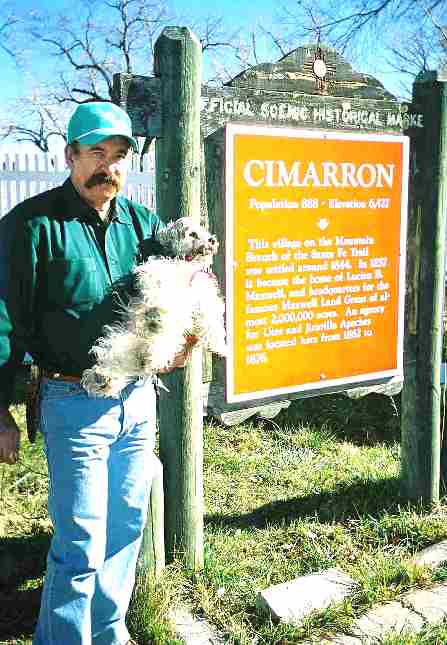
If anyone has any information/old photos of the area, send them to me and I'll post them on the webpage for our viewers.
Thanks,
Len Kubiak

HISTORY OF BAGDAD & LEANDER, WILLIAMSON COUNTY, TEXAS

THE EARLY DAYS
For thousands of years, the region that was to become known as Bagdad and later Leander was home to a variety of Indian
tribes that made their villages along the area creeks and streams.
Artifacts identified as belonging to the Paleo-Indian (12,000-6,000 B.C.) and Archaic (6,000-200 B.C.) cultures have been
found in the area, indicating it was continuously occupied for more than 12,000 years.
NOTE: On Dec. 29, 1982, Texas Highway Department archeologists uncovered a skeleton of a pre-historic human female at the Wilson-Leonard Brushy Creek Site (approx. 6 mi. SE of Leander off HW1431). Because of the proximity of the grave site to the town of Leander, the skeleton became known as the Leanderthal Lady. Carbon testing indicates the woman lived 10-13,000 years ago. She was about 30 years old at the time of death and measured 5' 3" in height.
When the first Europeans arrived in
the region in the 1500's, the area in and around the Bagdad/Leander region was home to a sizeable Tonkawa Indian population. However, by the late 1700's, Comanches (Southern Shashones) and Kiowas
rode by horesback into into the area, hunting buffalo and raiding Indian villages. Up until the early 1800's, large buffalo
herds grazed the open areas of what became Williamson County.
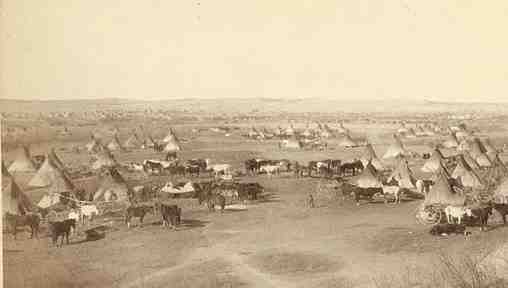
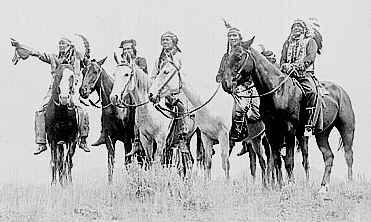
TUMLINSON FORT OR BLOCKHOUSE FORT(1835)
In 1835, Stephen F. Austin sent a group of armed men, called the "Ranging Corp" to build forts for the protection of the settlers from Indian attacks in the region northwest of the Austin Colony near present day Leander.
Captain John J. Tumlinson, under the command of Major Robert M. Williamson (for whom Williamson county was later named) and sixty men built a "blockhouse" fort near the present day neighborhood of Blockhouse Creek subdivision (near north U. S. Highway 183 and Leander). Tumlinson and his men cut steps into a large oak tree and used the tree as a lookout tower to spot Indian war parties.
In February of 1836, the rangers got word that the Mexican Army under command of Antonio L�pez de Santa Anna had invaded Texas. The company then abandoned the post to go fight the Mexican army. They were too late to help the defenders at the Alamo and arrived at San Jacinto after the battle was over!
In 1837, Noah Smithwick, one of the original Rangers that helped build the outpost, traveled by the fort on a scouting mission and discovered that the Ranger outpost had been burned by the Comanches. The fort was abondoned at this point.
More detailed information about Blockhouse/Tumlinson Fort is available in Noah Smithwick's book "The Evolution of a State or Recollections of Old Texas Days".
A large granite marker, known as a "Texas Centennial Marker" was placed at the entrance to the neighborhood in 1936 to celebrate the Texas Centennial).
COMANCHE ATTACK ON BRUSHY CREEK (January 1839)
A skirmish between Comanche raiders and a local militia near Taylor on Brushy Creek in January of 1839 led to another major battle between Anglo settlers and Indians in Williamson County. The Comanche war party retaliated on February 18, 1839, by attacking several area homes, including those of Mrs. Robert Coleman and Dr. J. W. Robertson. Mrs. Coleman and her son, Albert, were killed. Another son, Tommy, and seven of Robertson's slaves were taken captive. During the ensuing battle to recover the captives from the Comanches, several other white men were killed including Jacob Burleson, Edward Blakely, the Rev. James Gilleland, and John B. Walters. It is unknown how many Comanches were killed in the battle.
WAGON TRAIN MASSACRE NEAR THE PRESENT TOWN OF LEANDER (June of 1839)
Up until the mid 1800's, Comanche Indians still claimed the Leander and Bagdad region and points west as their home. In June of 1839, a wagon train from South Austin carrying some 17 settlers were attacked and killed by the Comanches on the banks of Brushy Creek approximately one mile west of present-day Leander on FM 2243 and are buried in a mass grave in the Davis Cemetery on the north side of the road. The only survivers were Mrs. Webster and her two children who were taken captives by the Indian War Party. They were all later recovered from the Comanches by the Texas Rangers.
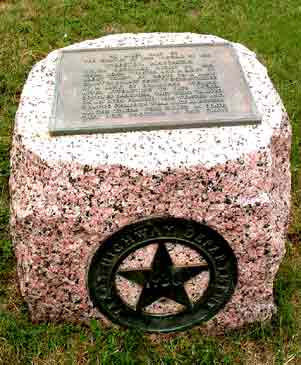
Texas Historical Marker Regarding the Webster Wagon Train Massacre at
the Hands of the Comanches.

Closeup of the Texas Historical Marker describing the Wagon Train Massacre near present-day Leander.
(1839/1841) PRESIDENT LAMAR DRIVES OUT MOST INDIAN TRIBES
President Mirabeau B. Lamar, who took office as President of the Republic of Texas at the end of 1838, had a very hostile attitude towards Indians than did Sam Houston. Lamar believed that the Indians had no integrity; thus, there was no possibility of peaceful negotiation or co-existence. The only solution to the violent clashes between whites and Indians was to rid Texas of the Indians--permanently.
Lamar spoke for the majority of white Texans, who had wearied of Sam Houston's peace efforts. Houston had achieved little cooperation with the Texas Congress, which ratified almost none of his treaties. By contrast, Congress was quick to pass Lamar's frontier defense bills and appropriated more than a million dollars to pay for troops, military roads, and forts.
Lamar sent a commission including David G. Burnet, Thomas J. Rusk, and Albert Sidney Johnston, to negotiate the removal of the tribe to the Arkansas territory. He also deployed about 900 army regulars, volunteers, and militia to East Texas.

President Lamar, Commander and Chief of the Texas Army Regulars responsible for Driving Most Indians out of Texas.
On July 15, 1839, several hundred warriors under Chief Bowl engaged the Texans near present-day Tyler. In the initial battle, the Indians were defeated, losing eighteen men to the Texans' three. The next day, the Texans pursued the retreating Indians and inflicted more than 100 casualties, Chief Bowl among them. They also burned the Indian villages and chased the Indians across the Red River into neighboring Indian Territory (Oklahoma).
In the aftermath of the Cherokee battles, many of the weaker or more peaceful tribes Texas were also forced to relocate.
By 1841, East Texas was almost entirely cleared of Indians. The Alabamas and Coushattas were exceptions. They were regarded as a peaceful tribe who had aided Texans during the Runaway Scrape (after the fall of the Alamo and Santa Anna's army was searching for Sam Houston's army). The Alabamas and Coushattas were granted two leagues of land along the Trinity River.
WESTERN INDIANS UNDEFEATED UNTIL THE 1870s
However, the western part of the Texas Republic was a different matter.
The Comanche, Kiowa, and Apache nations refused to be driven out of Texas and continued fighting the Texas army and Rangers until their defeat in the early 1870's.
In the 1870s, Comanches launched a major attack against buffalo hunters at Adobe Walls near Amarillo. This raid resulted in a U.S. Army campaign under Colonel Ranald S. Mackenzie that broke Comanche power once and for all. The Red River War ended in Palo Duro Canyon with the destruction of the Comanche horse herd (estimates were as high as 2000 horses were killed by the army troops). The Comanche way of life could not survive without their horses so they were forced to surrender and begin the painful transition to reservation life. Their tribal government today operates near Lawton, Oklahoma.
Throughout the era from 1830 to 1870, Comanche and Kiowa raiding parties continued to be a threat in the Texas Hill Country but most strikes were carried out against isolated settlers like the Wafford Johnsons of nearby Liberty Hill.
THE ESTABLISHMENT OF THE BAGDAD SETTLEMENT(1855)
Despite the dangers of being attacked by Indian raiding parties, white settlers began moving in small numbers into what later became the town of Bagdad (named for Bagdad, Tennessee, the hometown of one of the early settlers) in the late 1840's and early 1850's. Soon a thriving little
community existed on the South Fork of Brushy Creek just west of present-day Leander.
One of the settlers, John Frederick Heinatz built his home and
adjoining store in 1850 near the intersection of present day Bagdad Road and Nameless Road. John later became the postmaster of Bagdad, served as a public school trustee, was a superintendent of Sunday School, banker, and practical advisor to his neighbors. He married Emilie Krohn and had nine children, six boys and three girls, seven of whom lived to adulthood in their home in Bagdad.

Beautifully-restored home built by John Frederick Heinatz in the Bagdad community in the fall of 1850. John served as the postmaster of Bagdad, served as a public school trustee, was a superintendent of Sunday School, banker, and practical advisor to his neighbors.
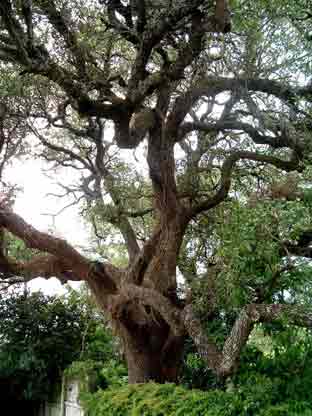
Ancient Live Oak Tree in the yard of the Heinatz family home in Bagdad.
In 1854, Bagdad (named after the hometown of one of the residents) was surveyed by innkeeper Charles Babcock and a post
office established in 1855; thus the town of Bagdad, Williamson County, Texas was established in 1855. Also in 1855, Bagdad
became a stagestop for the Austin to Fort Croghan (in present-day Burnet) stage line and later joined by a second stageline,
the Austin to Lampasas stage. Both stagecoach routes made a stop in the adjoing villages of Liberty Hill to the Northwest and Pond Springs to the Southeast.
Some of the early-day Bagdad families included: the Babcocks, Overstreets, Jennings, Hailes, Masons, Champions, Chennings, Davis's, Evans, Cravens, Raglands, Bells, Clucks, Brownings,Walkers, Woolseys, Clouds, Halls, Thaxtons, Webbs, Krohns, Bowmers, Pickles, Cochrans, McClouds, Stirlings, Laws, Martins, Fulkes, Nunns, Laucks, Hayes, Hollis's, the Heinatz's and Branch's among others.
Received the following email from "Sue Olinger" :
My great-great-grandfather, Sylvester Hamilton (who died Dec. 5, 1879), is buried in Bagdad Cemetery. He left a widow, Mary Ann, with 5 children, the youngest was my great-grandfather (Frank Wayne Hamilton). According to the Williamson 1880 census, Mary was farming and living near her brother, John Craven, who I also found on the census. I lost track of her after that. Sylvester may have been a butcher.

Austin to Fort Croghan Stageline Delivered Mail to Bagdad
The Bagdad Presbyterian Church (originally called the Pleasant Hill Presbyterian Church, was organized in 1857 by the Rev. R.
M. Overstreet in the vacinity of the Bagdad settlement.

Bagdad Presbyterian Church Organized in 1857; church congregation
moved to this New Building in Leander in 1884 on land Belonging to Sarah J. Walker later deed to the church.

Texas Historical Marker at the site of the Leander Presbyterian Church chartered in Bagdad and moved to Leander.
BAGDAD CEMETERY (1857)
The Bagdad Cemetery was was also started in 1857 with land donated by Charles Babcock whose three-year old son, John Babcock,
was burried there. There are many tombstones standing in silent testomony to the early-day Bagdad settlers that died in the
1860's and 1870's. Many were Civil War veterans.
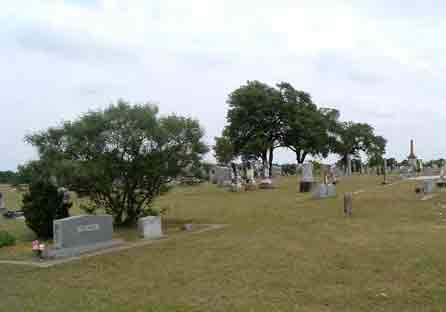
Bagdad Cemetery Established in 1857.
NEW CHURCH AND SCHOOL ESTABLISHED IN BAGDAD (1860)
In 1860, the United Methodist church was organized and began conducting Methodist services in a log structure built a short distance east of
the Bagdad Cemetery. This log building was also used as the Bagdad school until completion of the Masonic Lodge in 1871.
In 1879, the Methodist log church was replaced with a beautiful sanctuary (which was later moved about a mile east
to it's present location in Leander in 1901).
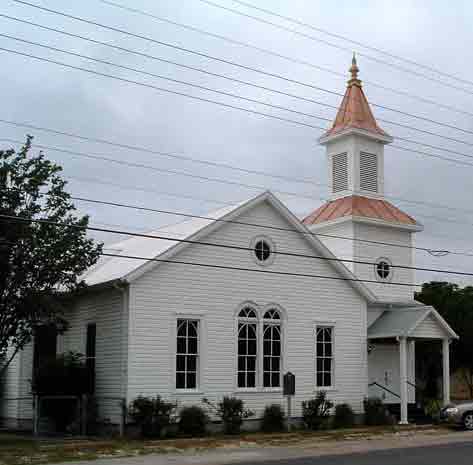

The United Methodist Church of Leander, organized in
Bagdad in 1860, was originally constructed in 1879 in Bagdad and later moved with mules and log rollers to its present site in Leander in
1901. Above the entry way is written two simple but powerful phrases,"Enter to Worship; Depart to Serve". It was in this church that my son, John Kubiak was baptised in 1970.

Historical Marker That Stands near the United Methodist Church of Leander.
By the start of the Civil War, the Bagdad region had a sizeable slave population with more cotton growers and slaves moving
to the area to escape the war front. These area farmers and plantation owners supported the war effort
by supplying beef and grains to the Confederate armies and producing cotton that was converted to cloth in textile mills and
shipped to Mexico.
CIVIL WAR END BRINGS DEPRESSION TO REGION
The end of the Civil War and the abolition of slavery meant a huge economic loss to the area whites (slave property had
previously accounted for approximately half of their wealth).
The African-American population of the region fared even worse. Most blacks left the farms owned by their former masters to
seek better working and living conditions, but for the vast majority, the change brought only marginal improvement. Most
ended up working as agricultural laborers or as share croppers forcing them into poor living conditions.
PUBLIC SCHOOL SYSTEM IN EARLY BAGDAD
The earliest schools in the area were held in the homes in Bagdad. In 1860, the Methodist Church log building was constructed and used as the Bagdad public school. In 1871, the Masonic Lodge was completed in Bagdad and became the public school for Bagdad. Then in 1893, a free public school opened in the new railroad town of Leander. The Leander business leaders then organized a high school association in 1899 to furnish support for the Leander educational system.
That same year (1899), the Masons moved their lodge to the new town of Leander where it still stands today just west of U.S. 183 near the new post office.

The original Masonic Lodge, Built in 1870/1871, became a public school in Bagdad. This building was built in 1899 as the Masons moved their lodge from Bagdad to Leander.

Texas Historical
Marker at the site of the Early-day Norton Mosses Masonic Lodge, chartered in Bagdad and named after one of the lodge's founders. An earlier lodge building in Bagdad doubled as Bagdad's public school in 1871. In 1899, the Masons moved their Lodge to Leander near the new post office.

Map of the present day Leander/Bagdad area
THE COMING OF THE RAILROAD
In 1881/1882 timeframe, the townsfolks of Bagdad were told of the approaching railroad line that was being built from Marble
Falls to Austin to carry granite for the new state capital building being built in Austin. However, the railroad officials
met a solid wall of opposition from the already entrenched town of Bagdad. As a result,the railroad decided to move their
tracks a mile or so to the east of Bagdad and establish a new town.
TOWN OF LEANDER IS ESTABLISHED (1882)
As the railroad tracks were completed in 1882, land was sold to the railroad and surveyed into lots to form the new town of
Leander. As was the case in most early-day railroad towns, the town of Leander was named after a railroad employee; in this
case the town was named for Leander �Catfish� Brown who was one of the men responsible for completion of the railline. The
post office was brought from Bagdad to Leander in 1882 and the first bank, Humble & Chapman, was established. Doctors�
offices, lawyers� offices, and a drug store had also joined this new community.
The business leaders of Bagdad soon realized the advantage of being located close to the railroad tracks and a rush was on to
relocate businesses to Leander which virtually closed down the town of Bagdad in 1882.

Texas Historical Marker Attesting to the early History of
Leander
Soon after the formation of Leander, the members of the Bagdad Presbyterian Church (originally called the Pleasant Hill Presbyterian Church),
voted to moved their congregation to the new town. A church building was erected in 1884, on land belonging to church member
Sarah J. Walker, who deeded the property to church trustees in 1895.

Originally Chartered in 1859 in Bagdad as the Pleasant Hill Presbyterian Church, this beautiful church was built in Leander in 1884.

Beautiful Stained Glass Window in the Leander Presbyterian Church.
LEANDER REMAINS SMALL RURAL TOWN FOR DECADES
With numerous cotton growers and share croppers in the area, Leander prospered after the Civil War as a cotton producer. Wesley Craven and J.Sampley built cotton gins in the Leander area and the processed cotton bales were hauled to textile mills by the railroad. This trend continued throughout the 1800's and the early 1900's until the great depression in the 1930's.
With falling cotton prices in the 1930's, many area farms were sold for back taxes and new land owners began to look to the ranching industry as the new cash cow. All area gins began closing in the 1940's and all signs of the cotton farming soon evaporated into history eliminating lots of jobs in this rural Texas community.
For the next couple of decades, Leander was a sleepy rural town with little signs of life with exception of a couple of convenience stores and a full serve gas station. Then as Austin began to grow, so did Leander, slowly at first and then more rapidly with area residents mainly commuting to Austin for jobs and enjoying country life in Leander.
AUSTIN GROWTH SPILLS OVER TO LEANDER
By the early 1970's, Austin's high-tech industry and rising cost of housing began to create a mobile home community in nearby Cedar Park and Leander. The population of Leander began to increase as Williamson County began attracting more settlers from the north.
THE CITY OF LEANDER VOTES TO INCORPORATE (1978)
On January 21,1978 the City of Leander was incorporated and Joe Bates became its first mayor. Over the next 25 years, Leander
entered a boom period with the population growing rapidly.
Sprawling subdivisions were developed west of the city and the
school district began a period of huge growth as well reaching nearly 20,000 students by 2005.
The Leander Independent School District now includes 23 different schools including:
Ada Mae Faubion Elementary School
Artie L Henry Middle School
Bagdad Elementary School
Block House Creek Elementary School
C C Mason Elementary School
Canyon Ridge Middle School
Cedar Park High School
Cedar Park Middle School
Charlotte Cox Elementary School
Cypress Elementary School
Deer Creek Elementary School
Laura Welch Bush Elementary School
Leander High School
Leander Middle School
Lois F Giddens Elementary School
New Hope High School
Patricia Knowles Elementary School
Pauline Naumann Elementary School
Pleasant Hill Elementary School
Running Brushy Middle School
Steiner Ranch Elementary School
Vista Ridge High School
Whitestone Elementary School
EARLY DAY RESIDENTS OF THE LEANDER AREA
 
Wesley E. and Martha Ann Craven, early day residents of Leander

John Upchurch, Early day resident of Leander area
LEANDER TODAY
Leander is no longer the small rural neighbor of Austin. With many modern subdivisions like Crystal Falls and Lake Line Ranch and many others sprawling along old Bagdad road new modern schools and government buildings being constructed, Leander is rapidly becoming a modern city of its own. Now with US183A (the new toll road) coming east of town and talk of rail mass transit into Austin, Leander is gearing up for a full-fledged modern city to spring up along the tollroad.

Crystal Falls subdivision entrance off Bagdad Road.

Entry way to one of the Lakeline Ranch subdivision entrances along Bagdad Road, once a lazy stagecoach road.

All this growth has attracted some major builders in the Leander area as can be seen by such signs throughout the area.
NEW LEANDER (TOD) IS GETTING OFF THE GROUND!
It's ironic that Leander was founded by the coming of the steam train and New Leander is being founded by the coming of "Light Rail"!
The proposal to combine the cities of Cedar Park and Leander into one mega city is off the drawing boards and rapidly gathering steam. A 2300-acre site has been identified and water and wastewater plans for a mega-city are already being developed. This highly-touted development is known as Tod (Transient Oriented Design). Capital Metro got the ball rolling by putting in a 400-parking space Park and Ride facility just north of present day Leander on the east side of US183. This modern new facility will serve as a port for up to seven rapid bus terminals. A light rail station is being planned surrounded by a massive residential, commercial development to support a population of some 15,000 people. In the planning stage are a thousand large homes, 2,500 small single family lots, 4,000 medium single family lots, 2,500 town home/duplex units, 5,000 urban apartment units and millions of square feet of office and commercial square feet and retail space.
The new transit-oriented development is being described as a progressive style of urban development that puts the pedestrian first and makes extensive use of multi-zoning for an interesting mix of homes, retail space and entertainment establishments.

Map of the proposed 2300 acre site for New Leander that includes roughly 6 square miles of all new development. The 2300 acre tract is roughly rectangular as shown above. The western boundary for the site extends westward toward Bagdad road to pick up the existing town of Leander; then swings northward along the east side of US 183 for about three miles; then eastward toward US183A. The southern boundary is just north of existing CR272.
SUPER HEB OPENED IN 2007
A huge HEB and a number of other businesses opened for business in 2007 at the intersection of Nameless Road (FM2243) and US183. Leander won't be a small town much longer.
TEXAS X PARK COMING SOON!
A new 203-acre park called Texas X Park has been on the drawing board for over two years but may become reality soon having been approved by the Leander City Council in early June. This space-age development will be on the west side of Bagdad Road with access to US183 via a new road called the San Gabriel Parkway. This roadway will be constructed using existing Halsey Drive and will become a 4-lane road from Bagdad Road eastward to US183.
When fully developed, the Texas X Park will hotels, restaurants, an RV park, beaches, a multi-use indoor sports complex, a supercross and motocross track, a lake and cable skiis, a hockey rink, and even a convention center.
As with other planned developments for Leander, The 203 acre Texas X Park will be less than a mile from the planned light rail passenger station which should attract scores of visitors from nearby Austin and Cedar Park.

Map of Area Toll Roads
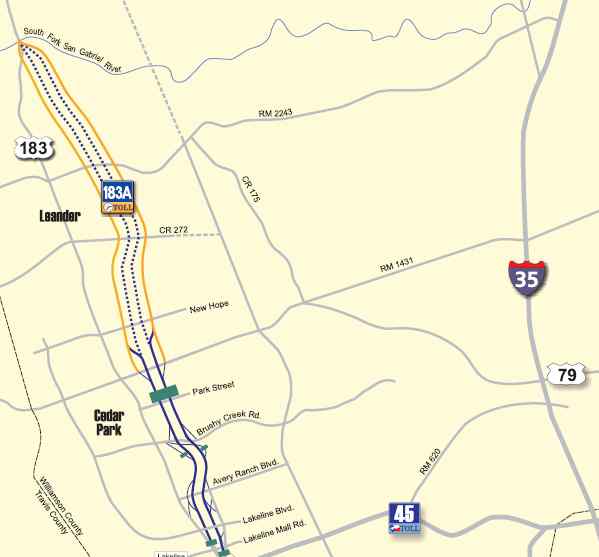
183A is the first toll road project being built from the ground up and extends 11.6 miles from SH 45/RM620 near the southern boundary of Cedar Park to the San Gabriel River north of Leander. The toll road basically runs parallel to the existing US183.

METRORAIL CAR CONTRACT HAS BEEN AWARDED
The contract for the Metrorail train cars has been let and construction will begin this summer with delivery in April or May of 2008. The Metrorail cars
will be red and gray with red stripes and doors, along with black and white accents.
Each car will be 138 feet long, have 108 seats and will be equipped with dual Cummins diesel engines in the center section. The Metrorail can function with only one engine operational and will also have backup power systems for the lights and air conditioning.
The trains will run to three outlying stations including Leander, Lakeline Mall and the Howard Lane/Merrilltown Drive area all of which will have park-and-ride lots.

WE NEED YOUR HELP
This is a site under construction. We'll be adding old photos and stories of early-day settlers in the Bagdad/Leander area.
If you have something you'd like to add to the site, add your company's add or website link to this page, send me an email.
Also see our history links near the bottom of this webpage. I spend a great deal of time researching Texas history and adding
topics of interest to our website for our internet viewers.
The site is constantly growing. Bookmark us and come back
often (and tell your friends about us).
Thanks,
Len Kubiak
Got any old Photos or Stories you want to share? Send me an email!
 For questions or comments, send me an Email For questions or comments, send me an Email
|

 For questions or comments, send me an Email at
lenkubiak.geo@yahoo.com
For questions or comments, send me an Email at
lenkubiak.geo@yahoo.com





